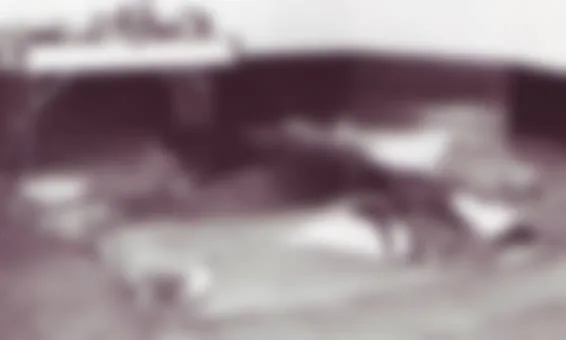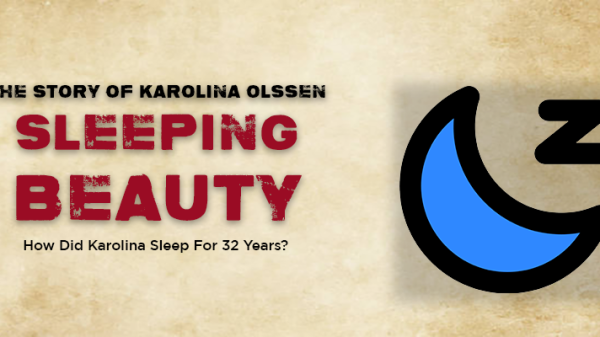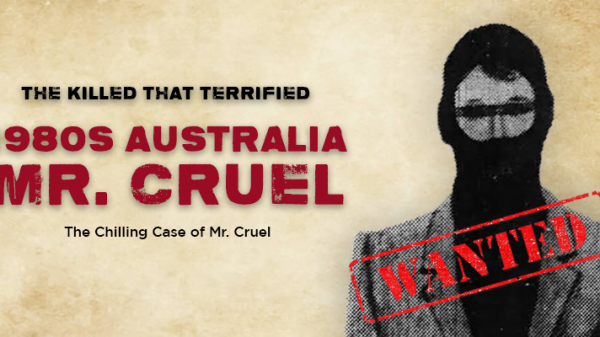John List departed from conventional norms as he embarked on a tragic path, forever altering the lives of those closest to him. On November 9, 1971, within the confines of their Westfield, New Jersey residence, he committed the heinous act of taking the lives of his wife, mother, and three children.
Following this unfathomable act, List cunningly vanished into thin air, leaving behind an air of deception that managed to conceal the truth for almost a month.
John List skillfully assumed a fresh identity, remarried, and skillfully evaded capture for nearly two decades. However, on June 1, 1989, his fugitive status ended abruptly when his murderous exploits were publicized on the television program known as America’s Most Wanted.
The relentless pursuit of justice led to his apprehension in Virginia. Once extradited back to New Jersey, List was found guilty on five counts of first-degree murder, subsequently receiving five consecutive life sentences without the possibility of parole.
This sentencing meant he would be denied the chance for release for an extensive duration, spanning almost 75 years.

John List in a file photo
Initially, John List was perceived as an epitome of perfection in his roles as a dutiful son, loving husband, and devoted father. His diligent efforts as an accountant at a local bank were aimed at providing for his family.
The opulent abode they resided in New Jersey boasted an impressive 19 rooms, complete with extravagant features such as a grand ballroom, majestic marble fireplaces, and an exquisite Tiffany skylight.
The year 1965 saw John List and his family embodying the essence of the American dream. They upheld their devout Lutheran faith by religiously attending Sunday services and actively participating in the community, with List himself imparting his wisdom as a Sunday school teacher. On the surface, everything appeared idyllic.
However, beneath this facade of perfection, a different reality emerged.
List’s motivations for committing such a horrific act were rooted in profound financial difficulties and his perception that his family members were deviating from their religious convictions. In a twisted belief that their souls would secure a place in Heaven, where he yearned to join them eventually, he carried out the unthinkable act of extinguishing their lives.
The (Not So) Perfect Life of John List
Following in his father’s footsteps, John List was deeply committed to his Lutheran faith and even became a Sunday school teacher. His educational journey began at Bay City Central High School, from which he graduated in 1943. That very same year, he felt compelled to serve his country and enlisted in the United States Army.
Throughout World War II, List applied his skills as a laboratory technician.
Upon his honorable discharge in 1946, List made the decision to pursue higher education. He embarked on an academic journey at the prestigious University of Michigan in Ann Arbor. There, he diligently worked towards his goals, obtaining a bachelor’s degree in business administration and a master’s degree in accounting.

The house where the family lived peacefully. Until the devil took over John List
As a testament to his dedication and capabilities, John List also achieved the rank of second lieutenant through his involvement in the Reserve Officers’ Training Corps (ROTC).
As the Korean War intensified in November 1950, List received a summons to return to active duty in the military. Stationed at Fort Eustis in Virginia, fate brought him into the path of Helen Morris Taylor, a woman who had lost her husband, an infantry officer, in the war and was residing in close proximity with her daughter, Brenda.
Their connection deepened, and on December 1, 1951, List and Helen exchanged vows in Baltimore, Maryland, solidifying their union. Subsequently, the family relocated to northern California.
John Loses His Job and His Mind
At age 46, in 1971, John List faced a devastating setback when he lost his job at the bank. Unfortunately, his subsequent attempts at securing employment proved unsuccessful. Overwhelmed by the burden of informing his family about the loss of income, List found himself unable to disclose this distressing news to his loved ones.
In an effort to cope with his dire financial situation, John List resorted to spending his days at the train station, finding solace in reading the newspaper. However, driven by desperation, he took clandestine measures to alleviate the financial strain.

John List with members of his family whom he killed, in a 1971 file photo
List surreptitiously skimmed money from his mother’s bank accounts, utilizing the funds to fulfill the mortgage payments. Deeply entrenched in his sense of self-sufficiency and fearing the humiliation associated with seeking welfare assistance, he adamantly refused to consider such a course of action. These principles, instilled in him from his father’s teachings, held immense importance to List.
It is difficult to fathom how his father would have perceived it. Still, John List, feeling trapped and seeing no viable alternatives, tragically arrived at a solution that appeared to him as the only option: the unthinkable act of murdering his mother, wife, and children.
What Did John List Actually Do?
Tragically, on November 9, 1971, John List committed an unfathomable act by taking the lives of his entire immediate family. He carried out this horrifying crime with a 9mm Steyr 1912 semi-automatic handgun and his father’s Colt .22 caliber revolver.
While his children were attending school, List first shot his wife Helen, 47, in the back of the head, followed by his mother Alma, 84, above her left eye. As his daughter Patricia, 16, and younger son Frederick, 13, returned home from school, John List mercilessly shot each of them in the back of the head. Afterward, he proceeded to make himself lunch before embarking on a series of errands.

The scene of the death of John List’s family. The original image can be accessed here.
List first visited his bank to close both his and his mother’s bank accounts. Subsequently, he attended a soccer game at Westfield High School, where his elder son John Frederick, 15, was participating.
Afterward, John List drove John Frederick back home, but tragically, he subjected his own son to repeated gunfire, as evidence suggested that John Frederick had attempted to defend himself.
Following these heinous acts, List arranged the bodies of his wife and children in sleeping bags in the grand ballroom of their mansion. His mother’s body remained in her attic apartment. Before departing, List left behind a five-page letter addressed to his pastor, revealing his twisted reasoning for committing these atrocities.
In his letter, he claimed to have witnessed an overwhelming amount of evil in the world and believed that killing his family was a way to save their souls. List then meticulously cleaned the various crime scenes, removing his own image from all family photographs within the house. He also tuned a radio to a religious station before leaving the premises.
The shocking truth of these murders remained concealed until December 7, almost a month later. The family’s reclusive nature, combined with notes sent by List to the children’s schools and part-time jobs, falsely claiming that they would be visiting their ailing maternal grandmother in North Carolina for a few weeks, contributed to the delay in discovery.

John List Jr — The boy was the pride and joy of the List family. The original image can be accessed here.
Coincidentally, Helen’s mother had canceled her planned visit to Westfield due to her illness, sparing her from becoming List’s sixth victim, as he later revealed. John List further obscured suspicion by halting milk, mail, and newspaper deliveries. Neighbors became suspicious when they observed lights consistently illuminated in every room of the mansion day and night without any signs of activity.
As light bulbs began to burn out one by one, they finally alerted the police. Law enforcement entered the premises through an unlocked basement window and tragically uncovered the lifeless bodies of the entire family.
The town of Westfield, previously known for its low occurrence of violent crimes since 1963, gained national attention due to the horrifying event that unfolded within its borders. It became the site of one of the most notorious felonies in New Jersey since the infamous kidnapping and murder of Charles Lindbergh, Jr.
Following the heinous act committed by John List, a nationwide manhunt was initiated. Law enforcement tirelessly pursued hundreds of leads in their quest for justice, yet all efforts proved futile. Compounding the challenge, all existing photographs of John List had been deliberately destroyed, hindering identification and apprehension.
The family car was eventually discovered parked at John F. Kennedy Airport in New York City, although no evidence surfaced indicating that List had boarded a flight.
In the aftermath of the tragedy, Alma’s body was transported to Frankenmuth, Michigan, where she was laid to rest in the Saint Lorenz Lutheran Cemetery. Helen and her three children were buried in Westfield’s Fairview Cemetery, solemnly marking their final resting place.

The body of Patricia List, the fifteen year old daughter. The original image can be accessed here.
The mansion known as Breeze Knoll, which had stood as a haunting reminder of the gruesome events, remained unoccupied until August 1972 when a fire ravaged it. While the incident was officially classified as arson, no suspects were identified, and the case remains unsolved.
Alongside the destruction of the house, the ballroom’s renowned stained-glass skylight, rumored to be an authentic Tiffany creation, was lost in the blaze.
It was estimated to be valued at least $100,000 at the time (equivalent to $700,000 in 2022). Subsequently, a new house was constructed on the same site in 1974, symbolizing a fresh beginning while bearing the weight of the tragic history that unfolded there.
John List Is Rediscovered from Hiding
In 1971, as later uncovered by the FBI, John List embarked on a train journey from New Jersey to Michigan before eventually settling in Denver, Colorado. He assumed the identity of Robert Peter “Bob” Clark, adopting the name of one of his college acquaintances (although the real Bob Clark denied any knowledge of List).
In early 1972, List secured an accounting job in Denver and held a position as a comptroller at a paper-box manufacturer from 1979 to 1986. He became an active member of a Lutheran congregation, even running a carpool for church members who were unable to travel.
During a religious gathering, List encountered Delores Miller, an Army PX clerk, and they were married in 1985. In February 1988, the couple relocated to Midlothian, Virginia, specifically settling in the Brandermill neighborhood. List continued to work as an accountant under the name Bob Clark at a small accounting firm called Maddrea, Joyner, Kirkham & Woody.
In 1972, John List was briefly considered a suspect in the infamous D.B. Cooper air piracy case due to his disappearance coinciding with the timeline of the airline hijacking. Furthermore, there were notable similarities between List and the hijacker’s description, and some speculated that a fugitive accused of mass murder would have nothing to lose.

The List children who were murdered by their father
After his capture, the FBI questioned List about his potential involvement in the Cooper case, but he vehemently denied any connection. Although his name occasionally surfaces in discussions and documentaries related to the Cooper case, no direct evidence has implicated him, and the FBI no longer considers him a suspect.
In May 1989, the 18-year-old crime committed by John List was featured on the television program America’s Most Wanted on Fox. This episode included an age-progressed clay bust crafted by forensic artist Frank Bender that strikingly resembled List’s current appearance.
Less than two weeks after the broadcast, List was apprehended at an accounting firm in Richmond, Virginia, following a tip from a neighbor in Denver who recognized the description and promptly alerted the authorities. Even after his arrest and extradition to Union County, New Jersey, in 1989, List initially continued to maintain his false identity.
However, faced with undeniable evidence, including a fingerprint match with his military records and other evidence discovered at the crime scene, List finally confessed his true identity on February 16, 1990.
The Trial of John List, the Mass Murderer
During the trial, List testified that his financial struggles reached a critical point in 1971 when he lost his job due to the closure of the Jersey City bank. Desperate to conceal this humiliation from his family, List maintained his daily routine and appearance, leaving home as if going to work and spending his days at job interviews or at the Westfield train station, reading newspapers until it was time to return home.
To prevent the mortgage from going into default, List diverted funds from his mother’s bank accounts. As the year progressed, the family’s financial situation worsened, leading List to encourage his children to seek part-time employment. While he claimed this was to teach them responsibility, it was also done to alleviate the family’s financial strain.
In addition to the financial hardships, List was also confronted with his wife Helen’s alcoholism and her untreated tertiary syphilis, which she had contracted from her previous husband and kept hidden for 18 years.

John List and his clay bust
According to trial testimonies, Helen had coerced List into marriage by falsely claiming she was pregnant. She insisted they marry in Maryland, where the premarital syphilis test was not mandatory, unlike in most other states at the time. Helen’s health deteriorated significantly over time due to the progression of the disease and her excessive alcohol consumption.
Testimonies revealed that she transformed from an attractive young woman to an unkempt and paranoid recluse who frequently and publicly humiliated List, often comparing his sexual prowess unfavorably to that of her first husband.
According to the testimony of a court-appointed psychiatrist, John List was diagnosed with obsessive-compulsive personality disorder. In his distorted mindset, he saw only two possible solutions to his predicament: accepting welfare or committing the horrific act of killing his family, believing it would secure their souls a place in heaven.
John List considered welfare as an unacceptable choice due to the potential exposure to ridicule and the violation of his authoritarian father’s teachings regarding the care and protection of family members.
On April 12, 1990, List was found guilty of five counts of first-degree murder. During his sentencing hearing, he disavowed direct responsibility for his actions, claiming that his mental state at the time rendered him unaccountable. He appealed for forgiveness, understanding, and prayers from those affected by his deeds.
However, the judge remained unconvinced, characterizing List as devoid of remorse and honor. He pronounced that after 18 years, five months, and 22 days, it was time for the voices of List’s victims to be heard, imposing the maximum sentence of five consecutive life imprisonments, the most severe penalty available at that time.

One of the last images of John List from an interview
List subsequently sought to appeal his convictions, asserting that his judgment had been impaired by post-traumatic stress disorder resulting from his military service. He also argued that the letter he left behind at the crime scene, which essentially served as his confession, should be considered a confidential communication to his pastor and, therefore, inadmissible as evidence.
However, a federal appeals court dismissed both arguments.
Over time, List began to express a certain level of remorse for his heinous crimes. In a 2002 interview with Connie Chung, he expressed regret, stating that he wished he had never committed the acts.
He claimed to have experienced remorse and prayed for forgiveness since that fateful day. When asked why he had not taken his own life, List explained that he believed suicide would have prevented him from reaching heaven, where he hoped for a reunion with his family.
The bastard died in 2008.
RIP Victims.
Next, read about the Story of Eben Byers, the Man Who Lost His Jaw After Drinking Radiation Water. Then, about the Story of Douglas Hegdahl, the Man Who Fooled the Entire Vietnamese Army!
















































zoritoler imol
October 26, 2023 at 5:03 pm
I like this weblog very much, Its a rattling nice office to read and get info . “A fair exterior is a silent recommendation.” by Publilius Syrus.